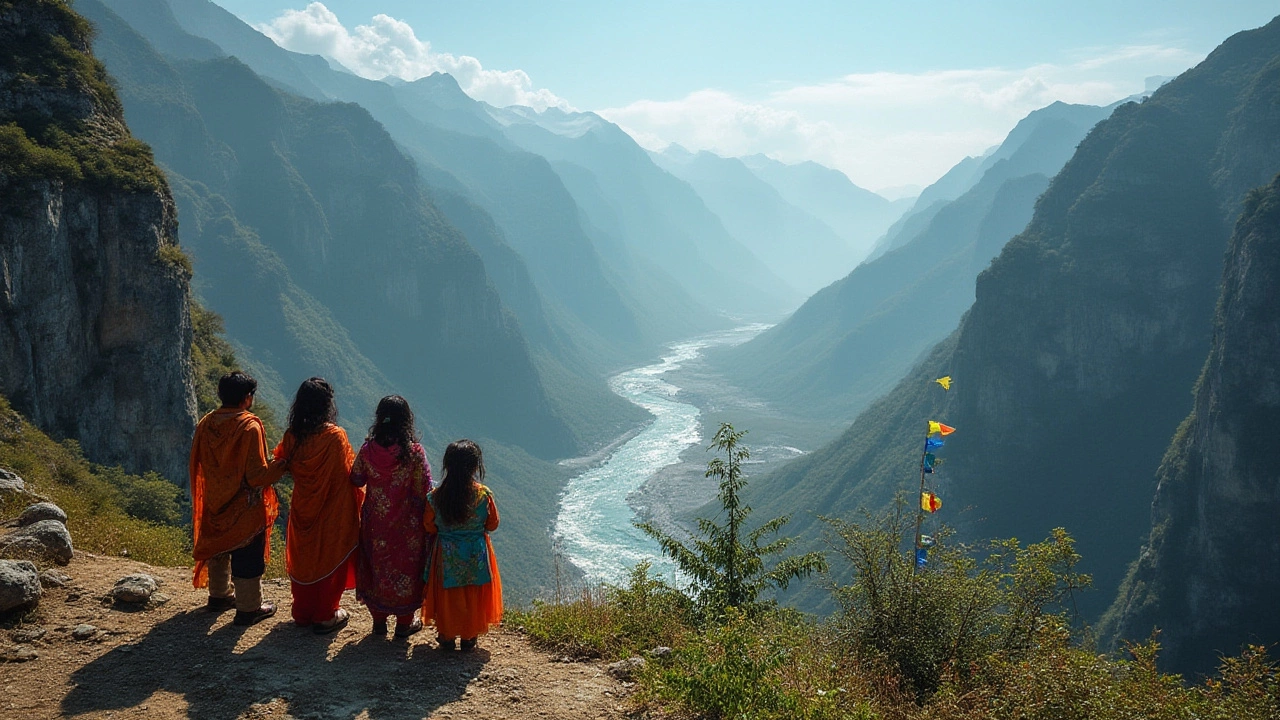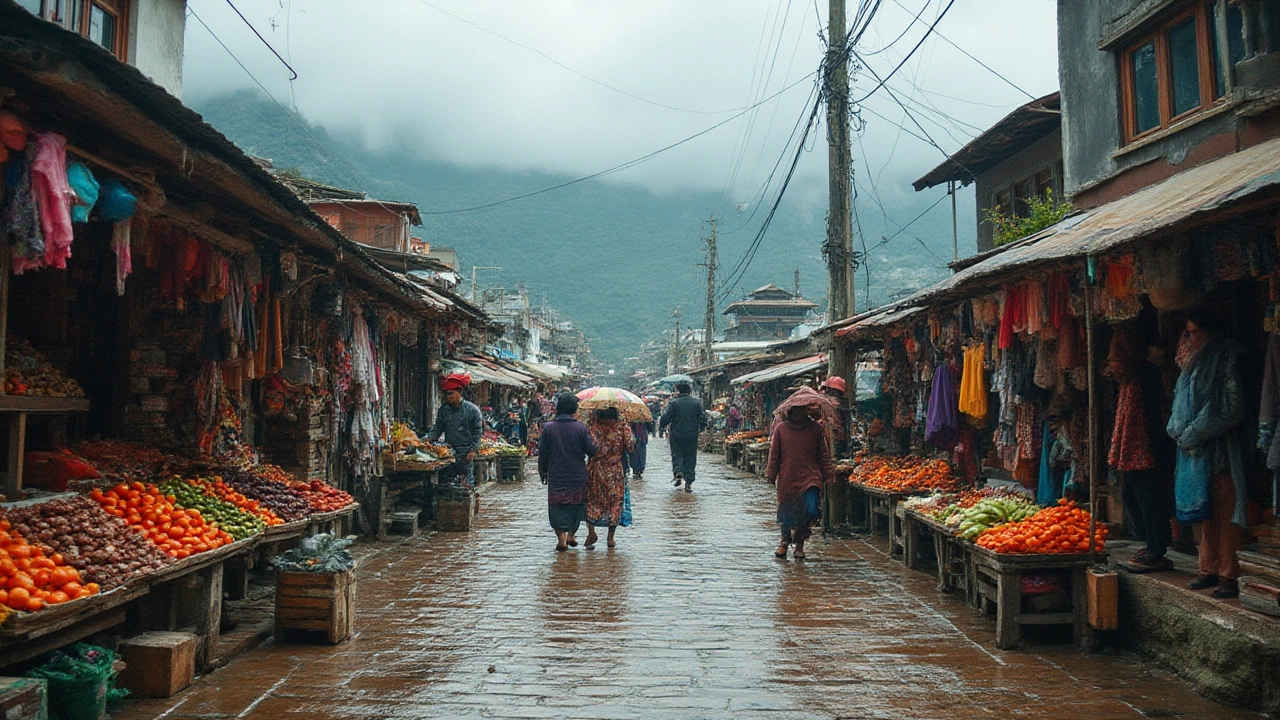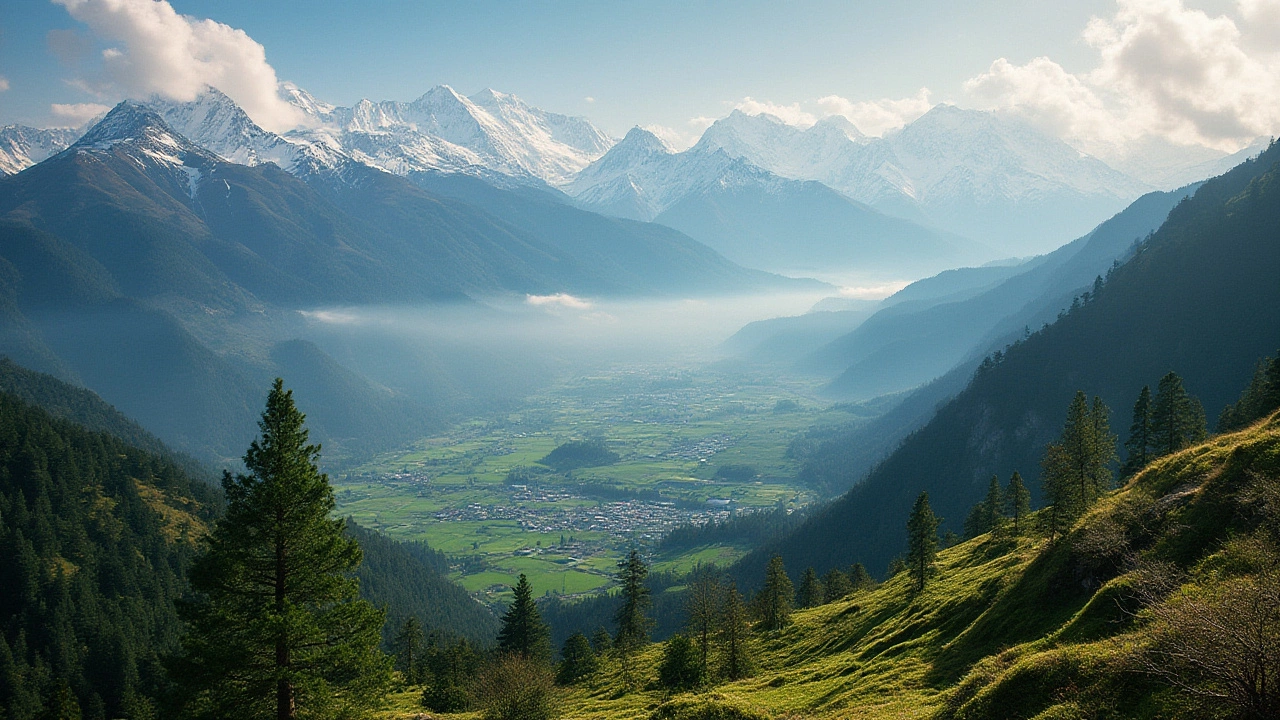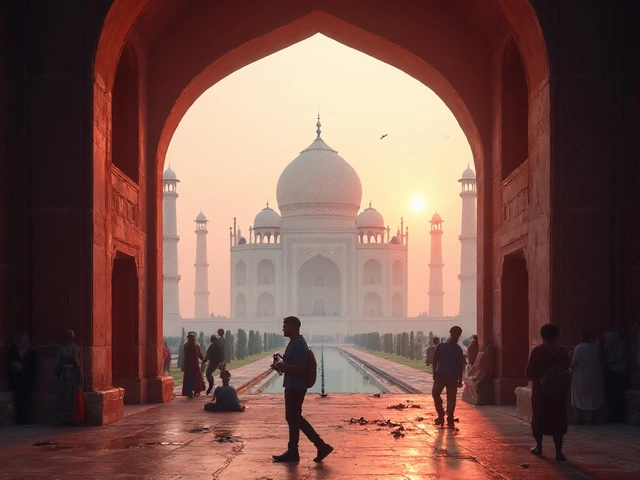Some debates drag on until you see the answer with your own eyes. Ask five people which is the most beautiful mountain state in India, and you’ll get five opinions ranging from Himachal Pradesh to Uttarakhand, maybe a wild card like Arunachal or Sikkim. But why does this question spark so much passion? Well, India’s mountains sculpt not just the landscape but also entire cultures, dreams, and ways of life. The pull of sharp Himalayan ridges, mist-filled valleys, prayer flags flapping in the wind, and apple blossoms carries a magic not just seen in Instagram landscapes, but in daily village rhythms. It’s a tug-of-war between grandeur and intimacy; between what’s visible on travel blogs and what locals call home. So, which state truly captures the mountain soul of India?
The Heavyweights: Himachal Pradesh and Uttarakhand
If this was a wrestling match of natural splendor, Himachal Pradesh and Uttarakhand would be the main event. Both are carved by the spine of the Himalayas, dotted with postcard-perfect hill towns, and blessed with some of the most revered temples and trekking routes on the subcontinent.
Himachal Pradesh sits like an open invitation for anyone craving variety. Shimla and Manali pull crowds with colonial leftovers, cozy cafes, and nearby ski slopes. But skip over to Spiti Valley and it feels like teleporting to Tibet: stark, high-altitude deserts, ancient monasteries clinging to ochre cliffs, and silence broken only by the soft hum of Buddhist chants. Himachal isn’t just a green flannel: there’s snow, apple orchards in Kinnaur, pine-fringed Dalhousie, Parvati Valley party scenes, and sleepy villages where internet is a rumor. Back in 2023, a survey by Lonely Planet readers put Kullu-Manali among the world’s top ten mountain getaways.
In Uttarakhand, the narrative shifts a bit. The “Land of the Gods” glows with spiritual energy. The chime of temple bells from Kedarnath and Badrinath floats on clean mountain air. Rishikesh – the yoga capital – became a global phenom after the Beatles 1968 visit. There’s more: hiking up to Valley of Flowers during the short July–August window feels like stepping into a painter’s fantasy, wildflowers carpeting an entire valley at 12,000 feet. The Garhwal and Kumaon regions offer everything from pangs of hunger on high-altitude treks to the kind of hospitality found only in remote Himalayan homestays. Uttarakhand also scores high for wildlife: Jim Corbett National Park (Asia’s first!) lets you spot tigers with snowy peaks in the distance.
So, which is more beautiful? Ask a Himachali, they’ll tell you Spiti or Kinnaur’s stark grandeur can’t be matched. Residents of Uttarakhand point to Nanda Devi, India’s second-highest peak, cutting into the sky over a green valley. If you want easy access, thrilling adventure, and a stew of culture, Himachal is a safe bet. If you yearn for spiritual charge, rare treks, and river valleys lined with myth, Uttarakhand wins hearts. But both feel like two sides of the same snowy coin.
The Dark Horse: Sikkim’s Himalayan Secrets
Call Sikkim the compact powerhouse of the east. This state isn’t the largest, but it rises from near-tropical tea gardens to the third-highest peak on Earth in no time. While everyone talks up the popular North Indian hill stations, Sikkim quietly turns heads with panoramic views of Kanchenjunga, Buddhist prayer wheels spinning at every turn, and seamless eco-tourism.
There’s a surreal quality to Sikkim’s capital, Gangtok – clouds drift in and out of the city’s cafes and busy MG Road, while the sound of monks chanting from Rumtek Monastery floats up at sunrise. But it’s how close you get to Himalayas that stuns. Adventure lovers rave about trekking up to Goechala, where the daunting face of Kanchenjunga looks close enough to touch. April brings a blush of over 40 varieties of rhododendrons. You can glimpse red pandas at Khangchendzonga National Park, a UNESCO site since 2016, or try yak cheese in quiet Lachung while snow fills the gorges.
Sikkim is also India’s first fully organic state – farming is chemical-free, and many homestays serve food straight from their backyard plots. The region’s blend of Nepali, Lepcha, and Bhutia communities, woven with Tibetan-Buddhist heritage, gives it a cultural texture all its own. Compared to Himachal and Uttarakhand, Sikkim feels less crowded, easier to get lost in. It’s not only about peaks, but the rhythm of monasteries, smiling locals, wildflowers, and genuinely sustainable travel. If you hate crowds and love authenticity, Sikkim’s mountain magic is hard to beat.

Wild East: Arunachal Pradesh, the Mystic Frontier
Most travelers never make it to Arunachal Pradesh, but those who do tend to talk about it like a secret society. Think raw, untamed, and jaw-dropping. Arunachal is surrounded on three sides by Bhutan, Myanmar, and China, making it India’s wild frontier. It’s bigger than Sikkim and almost as untouristed.
The mountains here are a russet jumble of thick forests, high passes, and swirling mists. Places like Tawang Monastery (world’s second-largest Buddhist monastery) are icons, but the real stories are in its hidden valleys – the Apatani villages of Ziro, the citrus-covered slopes of Bomdila, or Namdapha National Park, where you might spot red pandas, clouded leopards, and rare hornbills. The Siang River, which changes color dramatically as summer melts snows, slices through dramatic canyons. This place is perfect for wildlife lovers, hardcore adventurers, and anyone who wants a glimpse at endangered tribal cultures (over 20 recognized tribes, each with their own language and festivals).
Travel in Arunachal is for the patient. Buses crawl along winding roads that look like spaghetti flung over a jungle. But every effort yields a payoff: hardly any tourists, stunning sunrises, and a sense of being at the very edge of India. Foreigners need special permits, which means the views stay pristine and the local culture is less influenced by outside trends. If you thrive on surprise, culture, and vast roadless gaps, Arunachal can be a contender for India’s most beautiful mountain state, but only if you’re up for the journey.
Comparing the Details: Landscapes, Culture, and Adventure
Each of these states wears its mountain beauty in a different style.
- Himachal Pradesh: Think wide valleys (Kullu, Kangra), ski slopes, pine forests, and some of India’s wildest, high-altitude deserts (Spiti-Lahaul). Cafes filled with travelers, easy bus access to many hill stations, and a mix of Hindu and Buddhist culture. Great for road trips, paragliding in Bir, and snow adventures.
- Uttarakhand: Famous for holy towns, narrow valleys, and forested national parks. If your heart beats for spirituality, this state wraps you in it. Trekking is epic – Roopkund (the ‘Skeleton Lake’), Nag Tibba, and Kuari Pass. The Nanda Devi Biosphere Reserve draws ecotourists, and the local simplicity remains untouched in most upper villages.
- Sikkim: Compact but intense – Kanchenjunga vistas, rhododendron forests, yak herding, and more Buddhist monasteries than you can count on one hand. Fewer crowds, organic food, and a harmony between communities rare elsewhere. Adventure seekers trek Goechala or try river rafting on the Teesta. Getting permits for some regions protects both nature and culture.
- Arunachal Pradesh: Less infrastructure, more RAW. Rainforest meets mountain. Indigenous festivals almost every week, and it shares borders with Tibet and Bhutan, so the culture is a wild blend. Spot rare birds, tramp through unexplored valleys, or simply enjoy the thick silence.
If you travel for quick Instagram likes, Himachal or Uttarakhand are easy wins. Want to impress your friends with stories they’ve never heard? Sikkim or Arunachal are more your speed. And don’t forget about the northeast’s hidden gems like Meghalaya, but if you’re reading for mountains in the classic sense, the four above are the real contenders.

Tips for Exploring India’s Mountain States
Picking the “most beautiful” is as personal as taste in music, but there are a few tips that help you make the most of wherever you land.
- Altitude matters: Many of these places sit well over 2,000 meters. Give yourself time to acclimatize, especially before heading higher in Spiti, Arunachal, or on Uttarakhand’s tough treks.
- Permits: Sikkim and Arunachal require permits for some regions, even for Indians. Always carry ID, and check what’s needed before arrival. Many permits can be arranged in state capitals or online.
- Stay local: Ditch big hotels. Homestays and guesthouses offer more warmth, local food (try Sidu bread, thukpa noodle soup, or local apple cider), and stories you’ll never forget.
- Best time to visit: Avoid the monsoon (July-September). Summer (April–June) is lush, but winter brings snow and emptier roads—perfect if you like solitude. In Sikkim, aim for April–May for those famous blooms; in Himachal, September to November brings post-monsoon clarity and apple harvests.
- Responsible travel: Mountain states are fragile. Go easy on plastics, respect wildlife, and learn a few words in the local dialect – even just a “Namaste” or “Julay” goes a long way.
- Transport: Trains are only partly useful. In Himachal and Uttarakhand, buses or shared cabs cover most routes, but in Arunachal you’ll need private jeeps or guided tours. Roads can be slow and winding—prepare your playlist and snacks.
- Festivals: Time your trip around mountain festivals. Cham dances at Tibetan monasteries in Himachal, Magh Mela in Uttarakhand, Losar in Sikkim, or Dree Festival in Arunachal lift the curtain on rituals tourists rarely see.
- Travel insurance: Don’t skip it. Even expert trekkers have accidents, especially on snowy or forested trails far from hospitals.
So, is there a singular winner? Personally, after hundreds of hairpin bends, cups of butter tea, and missed buses, I’d say the *most beautiful mountain state in India* is the one that sparks that jaw-drop moment for you. For classic Himalayan drama and easy access, Himachal or Uttarakhand are foolproof. Sikkim stuns with intimacy and uncommon peace, while Arunachal is where adventure stories are born. The best part? You don’t have to pick just one. India’s mountains let you dream different dreams in every state, every season.



